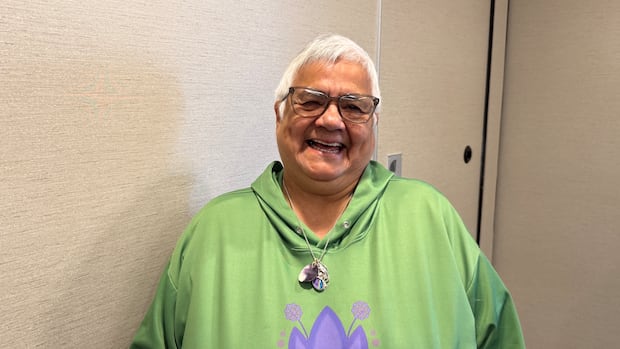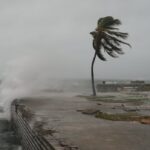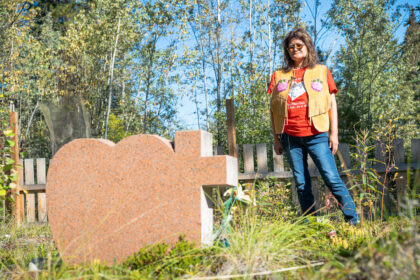IndigenousAround 100 Mi’kmaw elders from 13 communities across Nova Scotia gathered this week to share stories, language, and laughs. The event featured discussions on updating Mi’kmaw language terms, preserving cultural teachings and reflecting on the impacts of centralization. Kisiku gathering aims to inform curriculum for the next generationSis’moqon · CBC News · Posted: Oct 28, 2025 4:57 PM EDT | Last Updated: 2 hours agoListen to this articleEstimated 4 minutesMi’kmaw items were brought in from the Museum of Natural History in Halifax for the elders at the gathering in Dartmouth, N.S., to learn about and share knowledge on. (Sis’moqon/CBC)A hundred elders from 13 Mi’kmaw communities across Nova Scotia met this week at the Kisiku gathering in Dartmouth to share laughter, stories, and history.Kisiku means “elder” in the Mi’kmaw language. The gathering included discussion around adapting the Mi’kmaw language, sharing Mi’kmaw ways of being, and first hand experiences of the painful history of centralization, when the federal government forced First Nations families into fewer, larger communities.“Sometimes people don’t get a chance to tell their story, so this is a great opportunity for them,” said Elder Marilyn Francis from Wasoqopa’q First Nation.Francis said she was overjoyed to take part but joked that in attending the gathering, she would have to accept that she was a kisikui’skw – a Mi’kmaw term for an elder woman. The three-day gathering was organized by Mi’kmaw Kina’matnewey (MK), a provincial Mi’kmaw education authority, and was aimed at drawing on the wisdom of elders to help shape future curriculum.Elder Marilyn Francis from Wasoqopa’q First Nation said she was overjoyed to be surrounded by elders from all across Mi’kma’ki. (Sis’moqon/CBC)From Sunday to Tuesday, within several conference rooms, elders were encouraged to drop in and share their stories and insights. Many of these sessions were recorded so that knowledge would be preserved. “The resource and content development that we do, this is informing us every step of the way,” said Blaire Gould, executive director of MK.Beyond the serious conversations, the gathering also made space for fun, with nighttime activities including storytelling, ko’jua dancing, waltes dice games, bingo and fiddlers.Living through centralizationEthel Johnson sat down with her sister to share a story from when she was just seven years old in 1944, and her family was forced to move under the federal government’s centralization policy. Centralization began in 1942 to amalgamate First Nations families in Atlantic Canada into larger communities. In Nova Scotia, those communities were Eskasoni First Nation and Sipekne’katik First Nation.Ethel Johnson, left, and her sister Malglit Pelletier shared their story of living through centralization with organizers from MK in a room filled with elders. (Sis’moqon/CBC)Her family was relocated from Hantsport to Eskasoni, over 400 kilometres away. Her first house had three families living in it. “We were the lucky ones. Some of them lived in tents in the winters,” said Johnson.She shared a recording of her late father discussing their move and sharing stories of families who tried to return to their homes but found they had been burned down, and others who suffered through brutal conditions, including one mother who had a baby in a tent during the winter. “Her husband tore another tent to make more protection to keep the warmth in and he got arrested because he destroyed government property,” said Johnson.“Really, I’m sure we don’t know half of it.”Adapting the languageDiscussions about the Mi’kmaw language were in the largest conference room, on reviving old words and creating new ones. Mi’kmaw linguist Bernie Francis from Membertou First Nation shared outdated terms like suliewey (silver pieces) for “money” or newtayik (one flat piece – referring to a dollar bill) for “a dollar” that have become outdated. Bernie Francis, a Mi’kmaw linguist who developed the Francis-Smith orthography, says he was particularly interested in discussions around updates to the Mi’kmaw language. (Sis’moqon/CBC)Instead words like kwimu’ik (loon) were suggested for “a dollar,” referring to a loonie. Bernie Francis even pointed to some language around spirituality that may be in need of an update. He said missionaries didn’t accept the word Kisu’lk (Creator) since it could mean three things: a male, a female, or an animate “it.”“So they had to come up with a word that ensured that God was male, that’s why they came up with Niskam,” he said.“That comes from the word niskamij, which means ‘grandfather.’”Discussions on the Mi’kmaw language would often erupt with laughter, especially when Bernie Francis was speaking. He often shares his love of the Mi’kmaw language and the humour embedded in many of the words. (Sis’moqon/CBC)In all those serious discussions around language there was also laughter, especially with the many words in Mi’kmaw that hold double meanings, often leading to hilarious misunderstandings and jokes between the fluent speakers. “When we gather like this you’ll get people like myself and a few others who will take the double meaning and have a good laugh over it,” said Bernie Francis. ABOUT THE AUTHORSis’moqon is a Mi’kmaw woman from Ugpi’ganjig First Nation. She is a reporter with CBC Indigenous. She currently resides in Kjipuktuk, also known as Halifax. You can email her at sis.moqon@cbc.ca with story ideas.
Wednesday, 17 Dec 2025
Canada – The Illusion
Search
Have an existing account?
Sign In
© 2022 Foxiz News Network. Ruby Design Company. All Rights Reserved.
You May also Like
- More News:
- history
- Standing Bear Network
- John Gonzalez
- ᐊᔭᐦᑊ ayahp — It happened
- Creation
- Beneath the Water
- Olympic gold medal
- Jim Thorpe
- type O blood
- the bringer of life
- Raven
- Wás’agi
- NoiseCat
- 'Sugarcane'
- The rivers still sing
- ᑲᓂᐸᐏᐟ ᒪᐢᑿ
- ᐅᑳᐤ okâw — We remember
- ᐊᓂᓈᐯᐃᐧᐣ aninâpêwin — Truth
- This is what it means to be human.
- Nokoma











